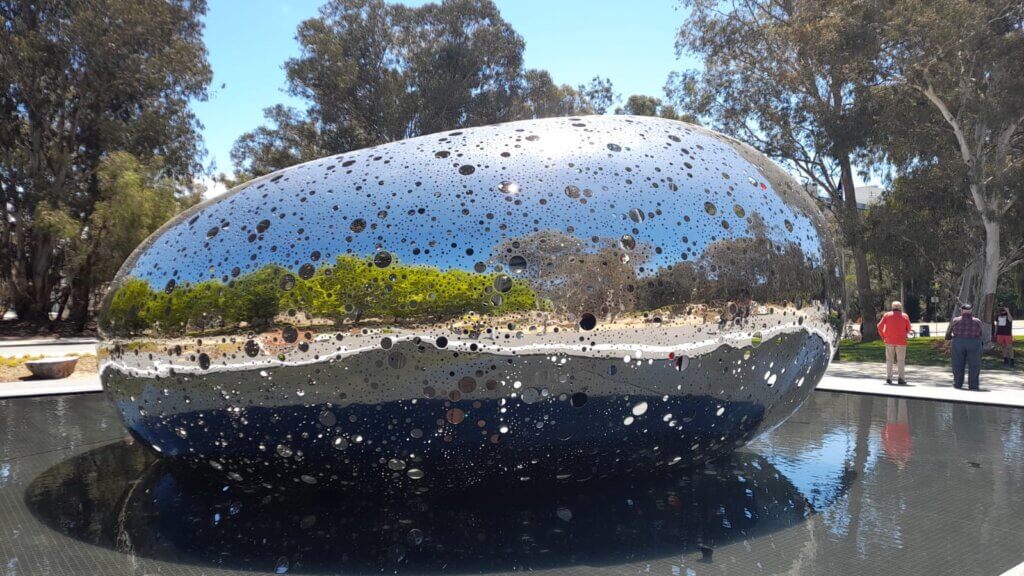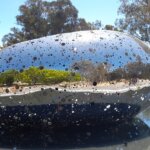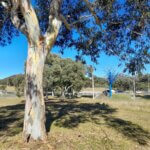The sunlight bounces off the outside of Lindy Lee’s ‘Ouroboros’ and forms dancing bright solar-like spots. It’s a giant shiny serpent which is easy on the eye (unless you’ve forgotten your sunglasses and the sunlight bounces straight back into your eyes). The mirror finish stainless steel makes for a great reflective surface and you instantly feel the pull of the cosmos.
It’s our first glimpse of the outside of the new and probably most talked about art installation which has just landed in Canberra. It’s almost midday by the time we reach the newest art sculpture in town, and probably the most talked about due to it’s hefty price tag of an astonishing 14 million Australian Dollars. The installation is described as an immersive public sculpture.
We’ve spent the morning meandering along Lake Burley Griffin, with our daughter scooting alongside. Exploring the Little Burley Markets and enjoying a coffee at The Jetty, before taking a look at some of the art sculptures in the grounds of the National Gallery of Australia. So by the time we approach our destination – the front of the National Gallery of Australia, to seek out the talk of the town – the ‘Ouroboros’, we are slightly hyped up – especially on point of wondering if a piece of art could possibly be worth spending such an incomprehensible amount of money on?
It’s easy to spot the sculpture due to the amount of people queuing to look inside this intriguing piece of art. It has only just officially opened to the public. When I say look inside, for most people it seems a visit inside isn’t complete without taking a selfie against the backdrop of this rather large, rather heavy (13 tonnes), very shiny object with holes in, behind them, or a quick pic of their reflection in the shiny outer surface.
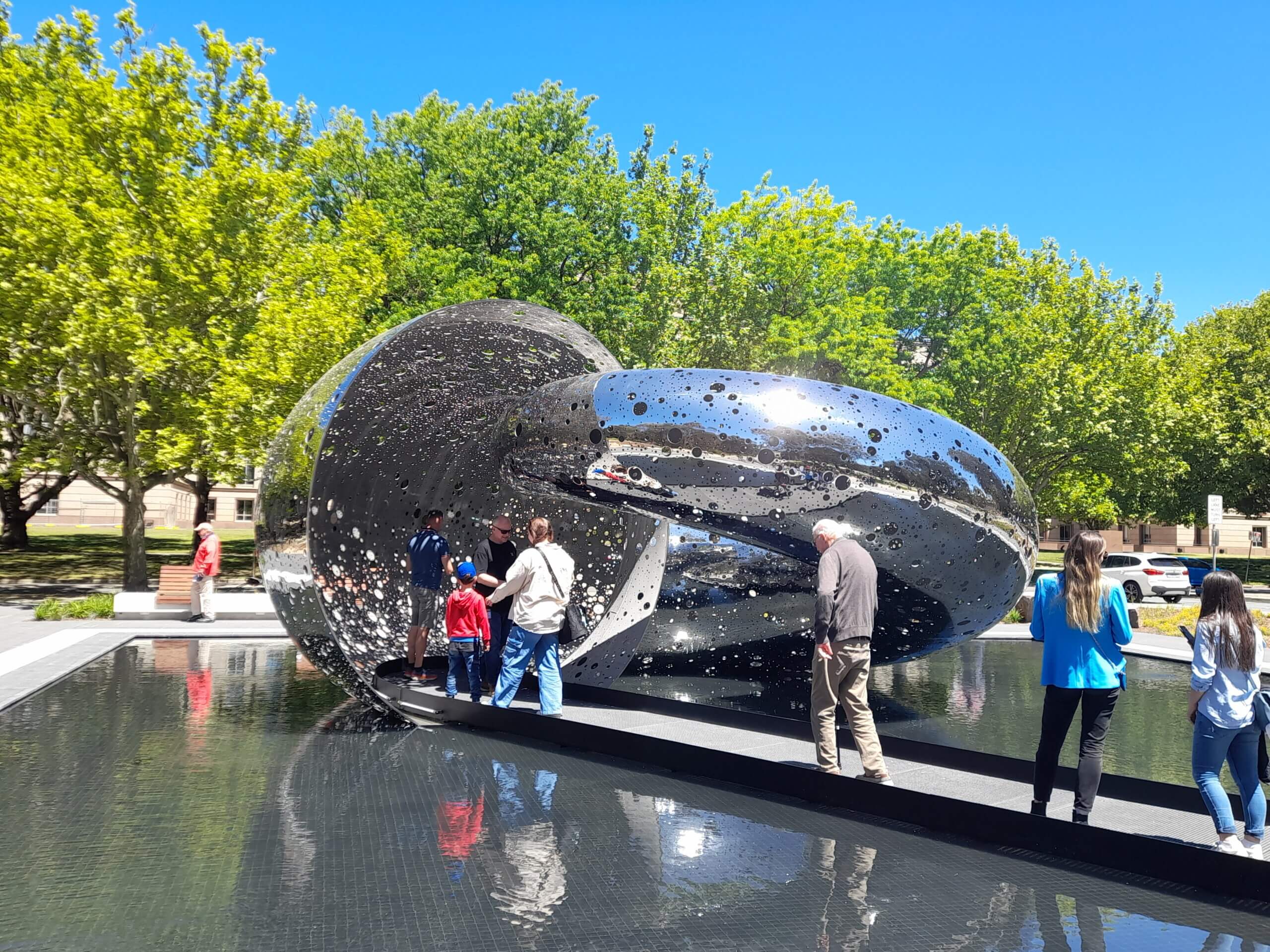
‘Ouroboros’ is certainly a marvel to look at during the day – you can walk around to look at the different dimensions and reflections of the natural world that appear on the shimmering outside of the sculpture. The way the light bounces around the surface and the holes in the surface, does instantly give you the sense of glimpsing the cosmos. The water which surrounds the main feature adds to the sense of serenity and the light plays across the water, bouncing shimmering watery reflections back inside the sculpture.
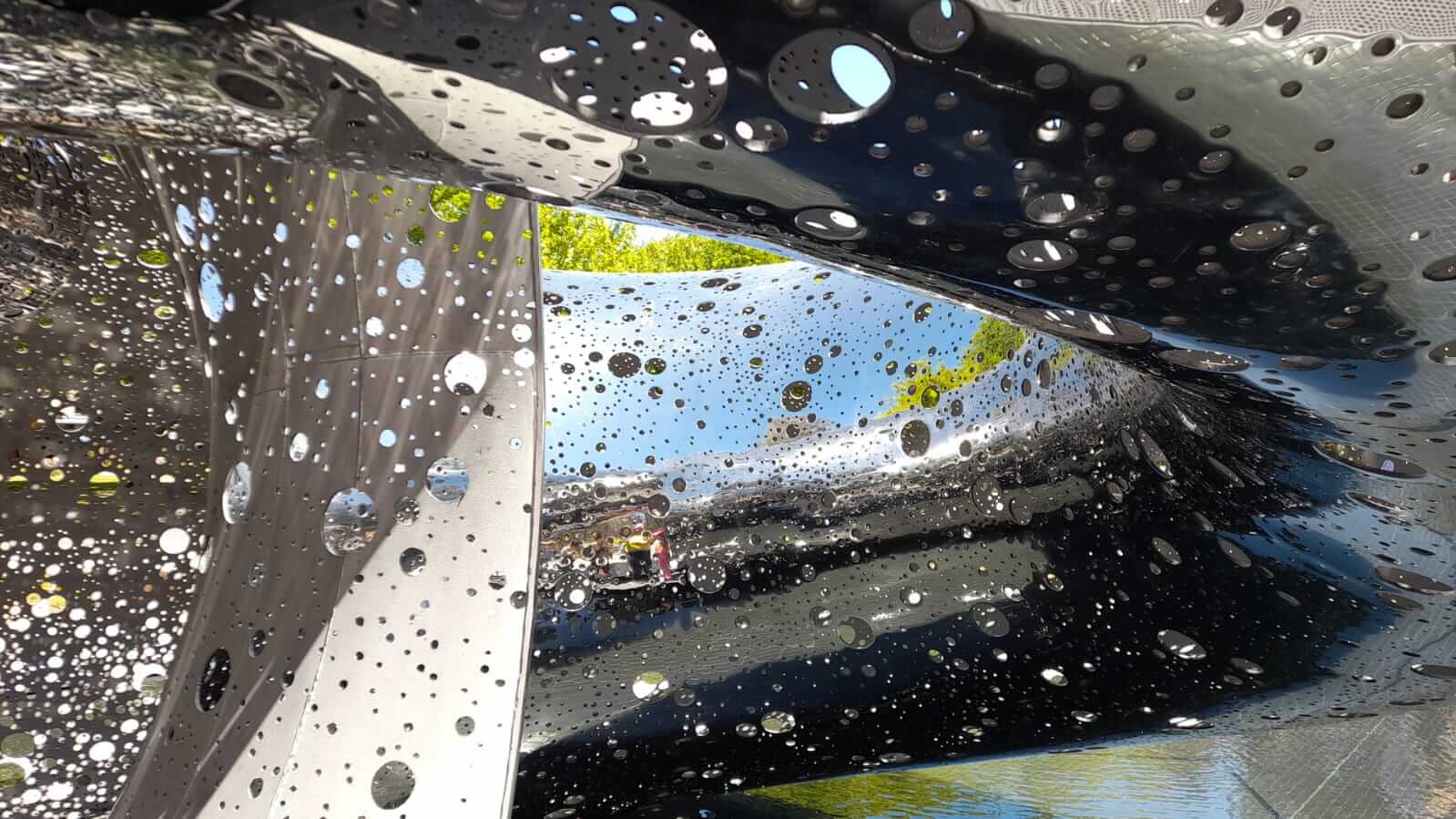
There are plenty of benches and giant flat rocks placed around the outside of the sculpture so that you can sit down and fully enjoy it from all angles. A quick search up of the word ‘Ouroboros’ lets us know that the word means a circular symbol showing a snake (or less commonly a dragon) swallowing it’s tail, to represent wholeness or infinity.
The sculpture is based upon an ancient image of a snake eating it’s own tail, which depicts the endless cycles of birth, death and renewal. Looking at this shimmering mass before us, it’s easy to let the mind wander as it conjures up pictures of the milky way, thoughts of our solar system, our universe and how tiny we are amidst it all. It would be easy to sit down here for a while and think about our place in space and time, and think about those loved ones who are no longer on this planet.
Peering at the sculpture in a literal sense. For a snake eating it’s own tail – looking at the sculpture ,from the outside, I don’t seem to be able to easily identify the mouth easily. However on reading a bit more information about the sculpture online, I realise it’s the snake’s mouth I am queuing to go inside!
Once inside there is a sense of comfort, perhaps from the blazing sun outside, but also it is pretty cool to look at the pieces of metal welded together and think about the sheer task of creating this shimmering beast. Apparently 400 people have worked on the art installation, including hand cutting 45,000 holes and 2 kms of welding. This is mind blowing in itself.
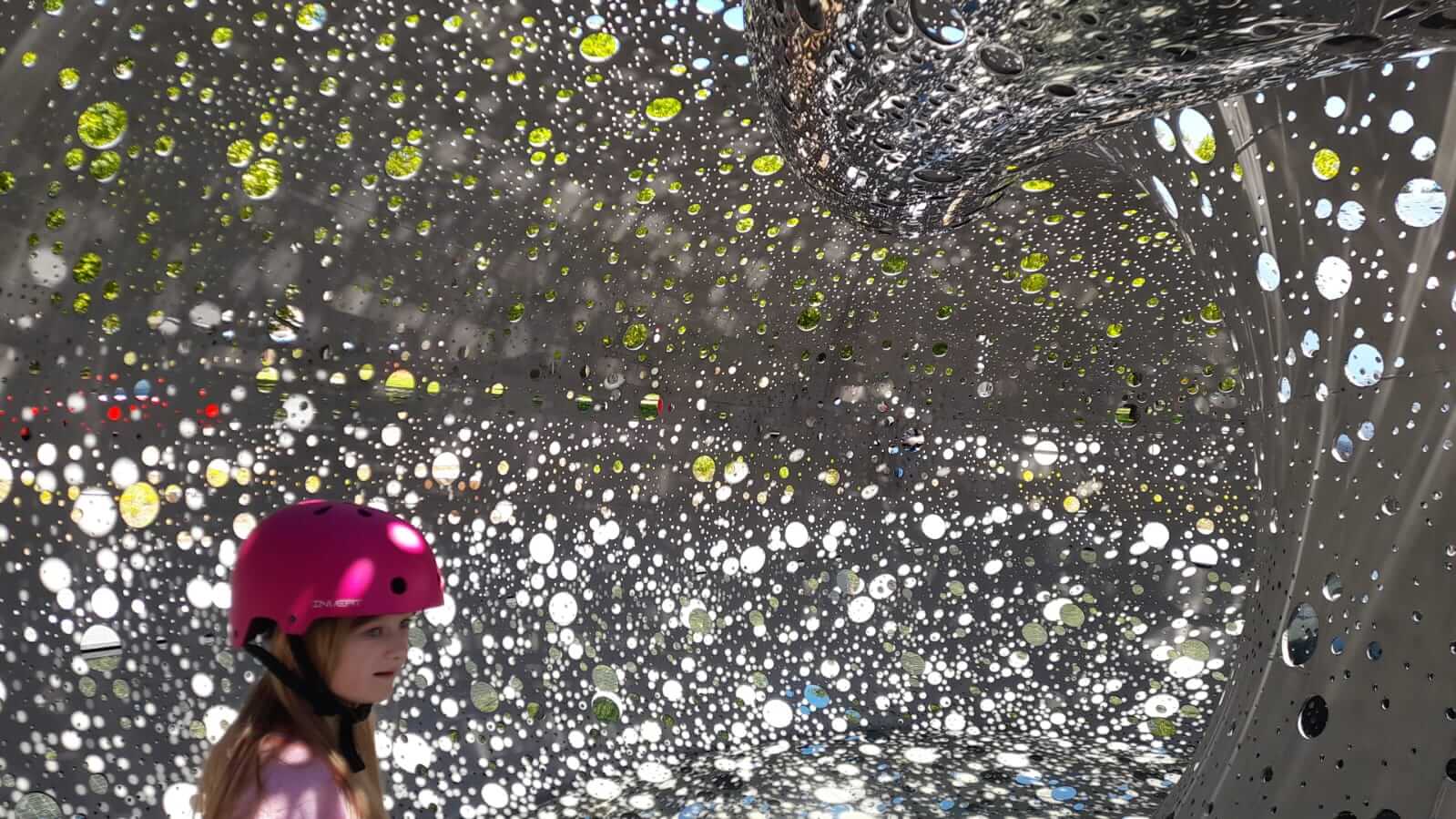
I’m also intrigued to hear about the journey of the ‘Ouroboros’ having been completed in Brisbane and then travelling on the back of a very large truck all the way to Canberra. A mammoth task of red tape, safety precautions and complete with a police escort. Weighing in at 13 tonnes, it’s the heaviest art sculpture to be transported by road in the southern hemisphere.
I’m still not sure about the hefty price tag on ‘Ouroboros’ but I’m intrigued. I’ll be back to visit at night – when the sculpture is lit up from the inside out and no doubt creates another dimension to explore.

